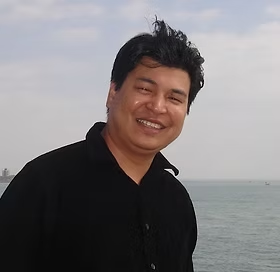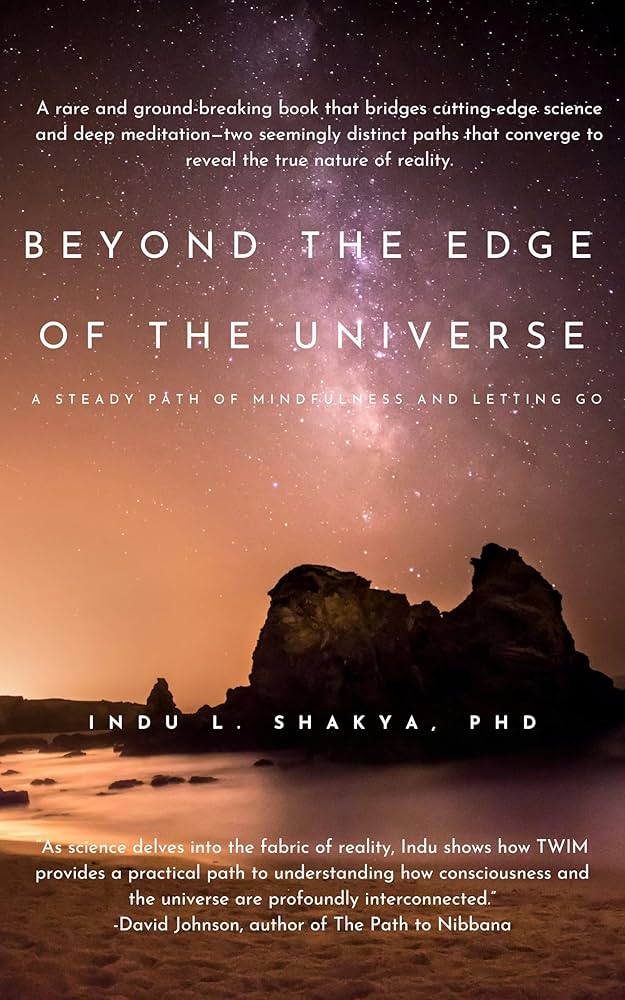For 2,600 years, the teachings of the Buddha about mindfulness and lovingkindness have permeated many cultures and societies, often forming an important anchor for social and moral cohesion. More than ever, the lessons and practices described in the Pali canon, a collection of scriptures in the Theravada Buddhist tradition, are relevant and helpful to guide people to deal with numerous challenges in modern life. In “Beyond the Edge of the Universe: A Steady Path of Mindfulness and Letting Go,” Dr. Indu Shakya, a longtime Buddhist practitioner, scientist, and researcher, explores the intersection of the Buddha’s teachings with contemporary scientific theories about consciousness, reality, and the universe. Shakya centers his discourse on his experience with Tranquil Wisdom Insight Meditation (TWIM), a meditation practice based on the original teachings of the Buddha, as found in the Pali Suttas.
I was drawn to the book because of my own exploration of Buddhism from different traditions, including Thai Forest, Tibetan and Soto Zen. Even after more than 20 years of exploring the Dharma, I approach my practice with a ”beginner’s mind,” to stay open to possibilities of understanding different perspectives and deeper meaning of the original teachings of Shakyamuni Buddha. What sets this book apart is the personal reflections and awakenings offered by Shakya derived from a 10-day online retreat with David Johnson in 2017. The author presents his insights into three parts, covering topics that blend Buddhist insights with modern scientific concepts such as quantum mechanics and the nature of reality. He emphasizes the practical aspects of mindfulness and meditation as a means to experience “nibbana,” the ultimate state of peace and freedom from suffering.
This book will benefit readers who are interested in the intersection of spirituality and science. I appreciated Dr. Shakya’s critique of materialist perspectives in science, which supports views that consciousness may be more fundamental than matter. He delves into various meditative practices taught by the historical Buddha, presenting them as pathways to experiencing the true nature of the mind and reality.
One challenging aspect of the book is that it requires some prior knowledge of Buddhist teachings. However, on the plus side, Dr. Shakya writes in a reflective, engaging and insightful way, encouraging readers to explore their own experiences and understanding of reality. Shakya refers to foundational texts that have been central to our modern understanding of Buddhism. He offers clear and concise explanations, making complex concepts accessible to readers who do not have a lot of exposure to Buddhist philosophy and practices, ensuring that everyone can benefit from his insights.
Editor's Note: This review was originally published on Reedsy Discovery.

